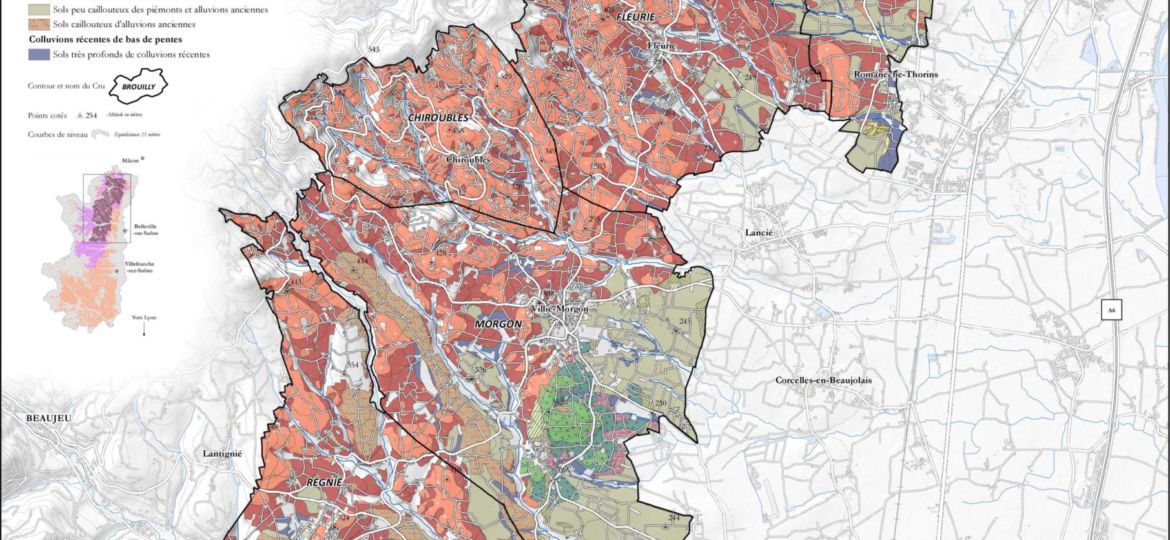
Despite the attacks on Beaujolais’ credibility and integrity, the region’s winemakers have persevered in producing genuine and authentic wines. Examples of this type of wine are found within the crus, or small grape growing districts. Similar to Napa, French wine increases in quality (and also in price) when the area of production is narrowed down all the way to a particular vineyard.
Zooming in on a particular Beaujolais Cru from the larger Beaujolais region has the same effect. There are ten crus in the region, each with its own characteristics that contribute to the diversity of Beaujolais wine (just like Napa Valley AVAs can do with Cabernet).
The wines featured in this article are from two of the crus – Saint Amour and Morgon. The winemakers in these crus are dedicated to making wine that truly represents the area and not marketing fads. They use a range of techniques that are traditionally found in the region and, in an area so focused on wine that is ready to drink quickly, cru winemakers are more concerned with making wine that can age.

Saint Amour
With a name evoking Valentine’s Day, you can’t help but love the wine from this cru. This is the second smallest and furthest north Beaujolais cru and is planted with around 800 acres of Gamay. According to legend, the area was named for a Roman soldier who converted to Christianity and established a mission in the area.
The cru features a mix of diverse soil types that blend to create a harmonious and balanced base for the vines. This area is hilly and also sits at a higher altitude than other crus. This elevation variation benefits the wine by maximizing sunlight exposure for the vineyards and keeping the area protected from northern rain by the hills.
Wines from this cru can be light and fruity or more complex with flavors of fruit liqueur and spice.
Morgon

Learn More:
The photos in this article and others on Beaujolais, are courtesy of Inter Beaujolais, a nice resource for more in-depth information on the region.





